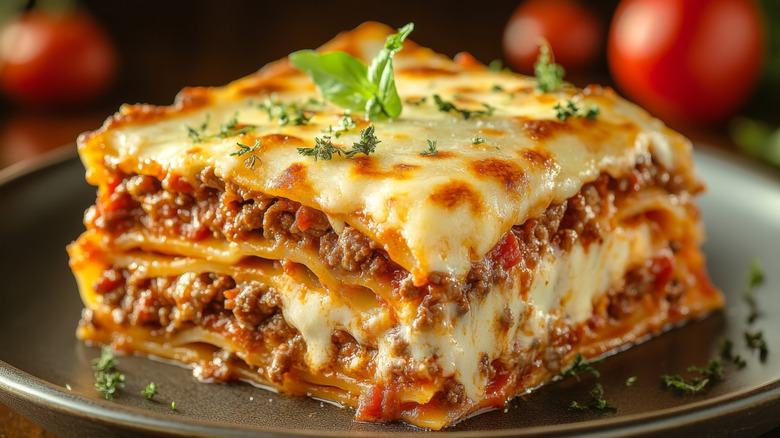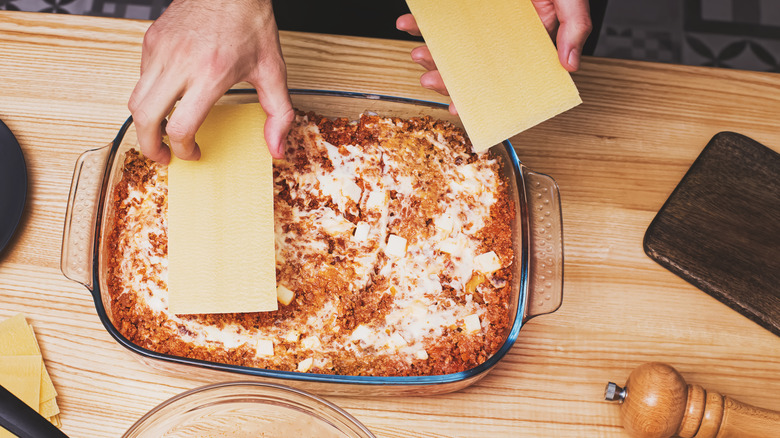How To Properly Layer Lasagna Noodles So Your Meal Doesn't Turn Out Gummy
A well-made lasagna is a dinner worthy of a celebration. Putting lasagna together can be a work-intensive task, so serving a piping-hot pan of this Italian favorite is a labor of love that's obvious to everyone gathered around your table. All that hard work should not be for naught. There's no bigger disappointment than cutting into your lasagna and discovering that the interior is thick, stodgy, or gummy, which can come about from incorrect layering. That's because one of the common mistakes everyone makes when cooking lasagna is laying out the noodles any which way and not being mindful of what effect their placement will have on the final dish.
So, how to do it the right way? Lay your noodles all in the same direction and do not overlap them, no matter how tempting it might be to fill in empty space. There might be a bit of pasta-related Tetris involved, but don't give in to the urge to lay noodles directly atop one another. The lasagna will be easier to slice and serve this way. More importantly, overlapping is an error that doesn't allow the pasta to cook properly, creating layers that are unpleasantly dense and sticky. But nailing the noodle layering isn't your only challenge, as the other layers of your lasagna make an impact on the final product as well.
Layering correctly is the key to a perfect lasagna
There's a bit of culinary science behind the proper construction of a lasagna. The strata of noodles, tomato sauce, and cheese all should be layered deliberately to ensure that the dish will heat evenly. To that end, always start with a thin layer of sauce on the bottom. Placing lasagna noodles flat against the bottom of your pan is a great way to burn them or ensure that they end up crunchy. You clearly don't want that.
Whether you swap the traditional ricotta for cottage cheese or upgrade your homemade lasagna with a classic Italian béchamel, the dairy layer should come after the noodles. Then, another layer of tomato sauce. Repeat this sequence until you've built up the right number of layers; a standard lasagna has three or four layers, but can consist of many more. The key thing is to remember the right order, as this construction ensures that the noodles are infused with the proper degree of moistness to ensure that they cook through. Combined with giving each noodle a bit of personal space from the next one, you will make sure that your lasagna is tender, intensely flavorful, and definitely not gummy. Like so many great dishes we love, a little bit of good technique goes a long way.

